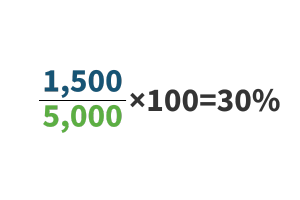
When it comes to improving your credit score, there’s one factor that often gets overlooked but plays a huge role: understanding your credit utilization ratio. If you’ve been wondering how you can get your credit score into shape, understanding credit utilization ratio and managing it is one of the most effective ways to do it. Let’s dive into what this ratio means, why it matters, and how you can use it to your advantage.
What Is the Credit Utilization Ratio?
The credit utilization ratio is a simple concept but a powerful one when it comes to credit scoring. In essence, it’s the percentage of your available credit that you’re currently using. To calculate your credit utilization ratio, you divide your credit card balance by your total available credit and then multiply by 100.
For example, let’s say you have a credit card with a $5,000 limit, and you currently owe $1,500 on it. Your credit utilization ratio would be:

This means you’re using 30% of your available credit. Generally, the lower this ratio, the better it is for your credit score.
Why Credit Utilization Ratio Matters
You might be thinking, “It’s just a number, so why does it matter so much?” Well it’s one of the most important factors in determining your credit score. In fact, it can account for up to 30% of your FICO score.
Here’s the thing: credit scoring models like FICO and VantageScore look at your credit utilization ratio to assess how well you manage your credit. A high ratio suggests that you might be relying too heavily on credit, which could signal to lenders that you’re a risky borrower. On the other hand, a low credit utilization ratio shows that you’re in control of your credit, making you a more attractive candidate for things like loan approvals and lower interest rates.
The Ideal Credit Utilization Ratio
So, what’s the ideal credit utilization ratio? Most experts recommend keeping it under 30%—ideally, the lower, the better. If you can get it down to 10% or less, that’s even better!
Think about it this way: If you have a credit limit of $5,000, aim to keep your balance at $1,500 or less. If your balance creeps up past $2,500, your credit score might start taking a hit.
Let us share an example from one of our clients who learned the hard way about the importance of this ratio. She had a credit limit of $6,000 on her main credit card, and she was using about $5,000 of it. For months, she didn’t understand why her credit score wasn’t improving, even though she was paying her bills on time. After talking to one of our credit experts at Credit Recovery Group, we noticed her credit utilization ratio was sky-high. She decided to pay down her balance, and within just a couple of months, her credit score improved by over 50 points! That’s the power of managing your credit.
How to Manage Your Credit Utilization Ratio
Now that you know why it’s important, let’s talk about how to manage it effectively.
1. Pay Down Your Balances
This one’s obvious, but it’s also the most impactful. The lower your balance, the lower your credit utilization ratio. If you’ve accumulated high balances, try to pay them down as soon as possible. Focus on paying off high-interest cards first to save money in the long run.
2. Request a Credit Limit Increase
If you’re managing your credit well and making payments on time, you can ask your credit card issuer for a credit limit increase. A higher credit limit means more available credit, which will lower your credit utilization ratio—provided you don’t increase your spending.
For example, if you have a $5,000 limit and a $1,500 balance, your credit utilization ratio is 30%. But if your credit limit increases to $7,500, your utilization drops to 20%, even though your balance hasn’t changed.
3. Use Multiple Credit Cards
Instead of putting all your spending on one card, try spreading it across a couple of different cards. This will keep your credit utilization ratio lower on each individual card. Of course, this strategy only works if you can manage multiple cards responsibly.
4. Monitor Your Spending
It’s easy to forget how much you’ve spent on your credit cards, but keeping track of your spending is crucial. Many credit card companies offer mobile apps that let you track your balance and spending in real time. Use them to stay on top of your credit utilization ratio and avoid going over the 30% threshold.
5. Pay More Than the Minimum
Paying just the minimum balance on your credit card means your balance will take much longer to pay off. This, in turn, keeps your credit utilization ratio higher for a longer time. Whenever possible, try to pay more than the minimum to reduce your balance faster.
Common Mistakes to Avoid with Credit Utilization Ratio
While it’s important to focus on improving your ratio, there are also some common mistakes you’ll want to avoid.
1. Maxing Out Your Cards
It might seem tempting to use your entire credit limit, especially if you’re in a pinch, but maxing out your credit cards can severely hurt your credit score. Aim to use no more than 30% of your total credit limit at any time.
2. Opening New Credit Cards Without a Plan
Opening new credit cards to increase your available credit may seem like a quick fix, but it can backfire. Multiple hard inquiries on your credit report can temporarily lower your score, and opening too many new accounts can hurt your credit history’s length.
3. Relying on Only One Card
If you’re using just one card and putting all your purchases on it, your credit utilization ratio will likely go up quickly. As mentioned earlier, spreading your spending across multiple cards can help keep your credit utilization ratio in check.
How Managing Your Credit Utilization Ratio Can Help You Build a Strong Credit Score
When you manage your credit utilization ratio effectively, you’ll start to see improvements in your credit score. This is because lenders see you as someone who uses credit responsibly. With a higher credit score, you’ll have access to better financial opportunities, such as:
- Lower interest rates on loans and credit cards
- Easier approval for credit cards and loans
- Better chances of getting approved for a mortgage or auto loan
- Lower insurance premiums
Having a solid credit score can save you a lot of money in the long run, making it easier to achieve your financial goals.
When to Seek Professional Help
Managing your credit utilization ratio is one thing, but sometimes, it can be difficult to understand credit issues on your own. If you’re feeling overwhelmed or if your credit score isn’t improving despite your best efforts, it might be time to seek professional help. At Credit Recovery Group, we specialize in helping individuals like you understand and improve their credit. Our experts can give you tailored advice and solutions to get your credit back on track.
If you’re struggling with high credit utilization ratio or other credit-related challenges, don’t hesitate to contact us today for a free credit evaluation.
Conclusion
Your credit utilization ratio might be just a small part of your overall credit score, but it has a huge impact on your financial health. By keeping your ratio low, you can improve your credit score, qualify for better financial opportunities, and save money. Remember, small changes can lead to big improvements. If you’re ready to take control of your credit and see real results, our team at Credit Recovery Group is here to help. Reach out today to get personalized advice and start building a stronger credit profile!
